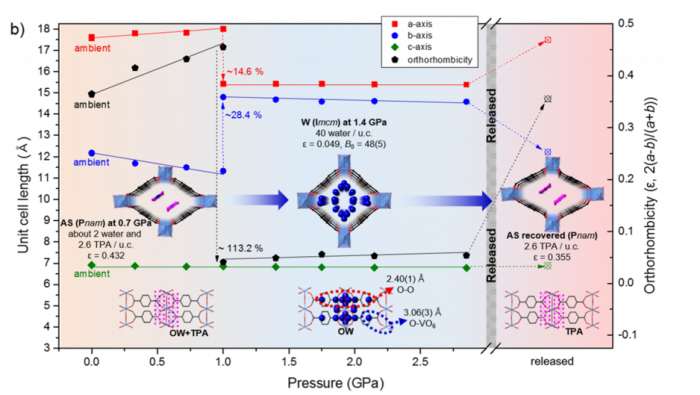“Pressure-Dependent Structural and Chemical Changes in a Metal−Organic Framework with One-Dimensional Pore Structure”
- Authors
J. Im, D. Seoung, G.C. Hwang, J.W. Jun, S.H. Jhung, C.-C. Kao, T. Vogt, and Y. Lee*
- Journal
Chemistry of Materials
Vol.28, pp.5336-5347, 2016.07 - DOI
Abstract
Pressure-dependent structural and chemical changes of the metal–organic framework (MOF) compound MIL-47(V) have been investigated up to 3 GPa using different pore-penetrating liquids as pressure transmitting media (PTM). We find that at 0.3(1) GPa the terephthalic acid (TPA) template molecules located in the narrow channels of the as-synthesized MIL-47(V) are selectively replaced by methanol molecules from a methanol–ethanol–water mixture and form a methanol inclusion complex. Further pressure increase leads to a gradual narrowing of the channels up to 1.9(1) GPa, where a second irreversible insertion of methanol molecules leads to more methanol molecules being inserted into the pores. After pressure release methanol molecules remain within the pores and can be removed only after heating to 400 °C. In contrast, when MIL-47(V) is compressed in water, a reversible replacement of the TPA by H2O molecules takes place near 1 GPa. The observed structural and chemical changes observed in MIL-47(V) demonstrate unique high pressure chemistry depending on the size and type of molecules present in the liquid PTM. This allows postsynthetic nonthermal pressure-induced removal and insertion of organic molecules in MOFs forming novel and stable phases at ambient conditions.












